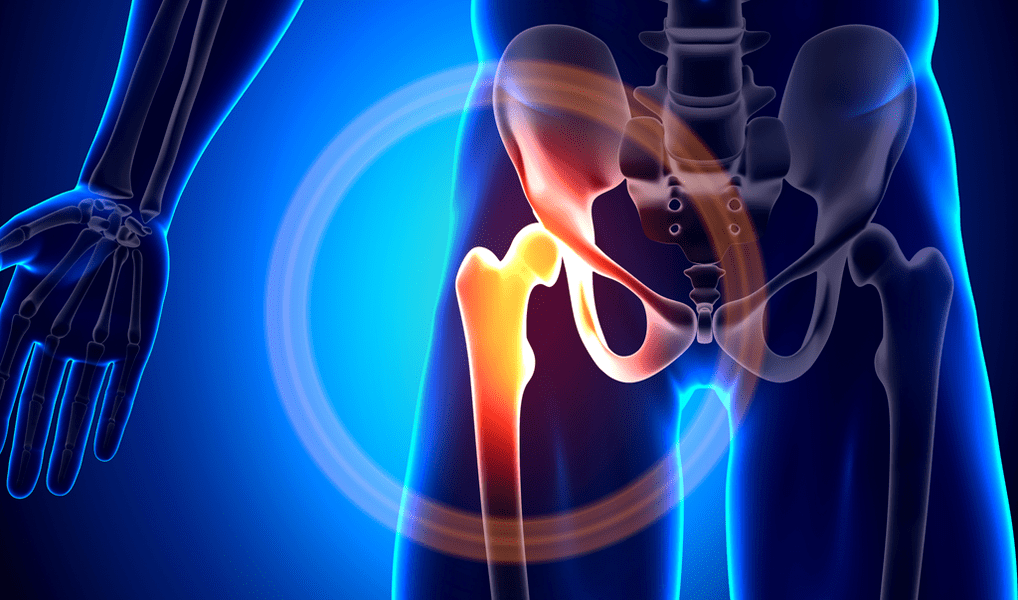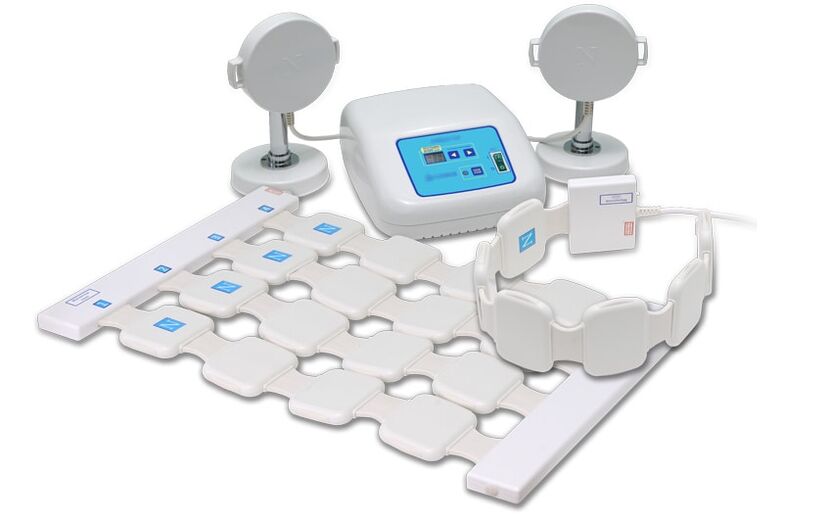What is this disease with such a complicated name - coxarthrosis? This disease is a deforming arthrosis of the hip joint and is also often referred to as osteoarthritis of the hip joint.
Currently, coxarthrosis is the leader among diseases of the musculoskeletal system that are degenerative-dystrophic in nature. There are many reasons that contribute to the occurrence of coxarthrosis, and in connection with this, this disease has spread to all age groups.

Coxarthrosis refers to non-inflammatory arthrosis, in which initially there are changes of a degenerative-dystrophic nature in the cartilage of the hip joint lining the surfaces of the joint bones, and at later stages bone changes already occur directly. Therefore, in the course of such an insidious course of the disease with coxarthrosis, there is a violation of the naturally normal functions of the affected hip joint, which ultimately leads to a violation of the functions of the musculoskeletal system of the patient whole.
Osteoarthritis of the hip mainly affects people over the age of 40. Of course, like other diseases, coxarthrosis can be successfully treated without surgery, but only at the initial stage. However, in the later stages, surgical intervention will become indispensable, and only one thing can help to avoid disabilities - prosthetics of the joint affected by coxarthrosis. Unfortunately, people with coxarthrosis, who do not attach importance to slight pain in the hip joint at the initial stage of the disease, avoid going to the doctor, and meanwhile, arthrosis of the hip joint progresses day by day, gradually turning into a more advanced form.
How does coxarthrosis develop?
Let's look at the mechanism of the development of the disease coxarthrosis. And let's start with the fact that the hip joint consists of two bones:
- the end of the femur itself, resembling a ball;
- acetabulum, resembling a small billiard pocket, located in the pelvic area of the pelvis;
- special articular cartilage on the surface of both bones, resembling a spongy substance and necessary as a shock absorber, compresses during movement and straightens in its absence;
- as well as the ligaments that form the cavity of the hip joint itself and thus form the joint capsule.
Also, around the joint there are muscle tissues, such as the hamstrings, buttocks and other muscles, on the functionality of which the condition of the hip joint also depends.
In the course of movement, when the articular cartilage is compressed, a certain liquid is "squeezed" from it into the joint, which is a kind of lubricant for the bones articulating in the joint. In addition, the articular cartilage itself performs the function of evenly applying loads to the surfaceof the joint and is an excellent shock absorber during movements.
The actual occurrence of the disease in coxarthrosis is primarily due to the fact that the nutrition of the cartilage of the hip joint is disturbed. The cartilage thins and then disappears in some places. If no measures are taken to stop this process, then in those places where the atrophy of the cartilage described above occurs, the bone will grow directly, trying to "fill" the resulting cavity in the joint cavity. As a result, such bone changes beginhence the appearance of osteophytes, that is, "spikes" on the bone. These deformities, in turn, lead to a violation of the congruence of the bones articulating in the hip joint and the subsequent "abrasion" of the remaining healthy areas of the articular cartilage.
Causes of osteoarthritis of the hip joint
The causes of coxarthrosis, as a result of which it occurs, can be divided into primary with unclear etiology and secondary causes as a result of other diseases, e. g. like:
- hip dislocation that is congenital;
- hip dysplasia;
- aseptic necrosis of the femoral head itself;
- previously suffered various injuries such asB. a femoral neck fracture;
- Perthes disease;
- inflammatory processes in the hip joint;
Since the disease of coxarthrosis occurs not only in one, but simultaneously in both hip joints, it can be said that bilateral coxarthrosis is not uncommon. In the case of primary coxarthrosis, however, the knee joint or the spine is usually also affected.
Symptoms of coxarthrosis
The very first symptoms of coxarthrosis directly depend on the degree of damage to the hip joint, as well as the stage of development of this disease, and the main ones are:
- pain that manifests itself in the hip joint during movement and disappears at rest;
- emerging lameness;
- stiffness that appeared in the hip joint;
- downward movement in the range of motion of the hip;
- Weakness of the thigh muscles and a noticeable decrease in their volume.
Separately, we consider the symptoms of coxarthrosis, depending on the degree of illness with this disease:
- Symptoms of coxarthrosis of the 1st degree: In the hip joint, there are pains that are moderate in nature and only after prolonged intensive loads on the joint. After removing the load and rest, this syndrome is completely stopped. With the first degree of coxarthrosis symptoms, the gait remains normal, and the range of motion of the joint does not change.
- Symptoms of second degree coxarthrosis: Pain in the hip joint is already felt more intensely than in the first degree, but it also projects into the groin area. In view of the developing muscular atrophy, the knee also begins to hurt, often more than the hip joint itself. Sometimes, with symptoms of second-degree coxarthrosis, pain occurs even at rest, and after the transferred load on the affected joint there is already a fairly long period of rest for reliefnecessary. Lameness occurs when you run or walk for long periods. At the same time, the strength of the thigh muscles tends to be reduced and the range of motion of the joint is underestimated.
- Symptoms of grade 3 coxarthrosis: persistent pain in the hip joint that does not go away even after extremely long rest or constant rest, including at night. The pain has already taken hold of the whole leg. Against the background of pain, the patient develops insomnia and various sleep disorders. There is a strong atrophy of the muscles of the thigh, buttocks and lower leg, while the motor volume of the joint is almost minimal. When walking, a sick person is forced to resort to assistive devices, such as a cane, to propel themselves.
If such arthrosis of the hip joint develops only in the hip joint of one leg, then its weakened thigh muscles give an impetus to the development of a lateral displacement of the pelvis, as a result of which the length of the leg with the affected joint coxarthrosis decreases.
Diagnosis of coxarthrosis
When diagnosing coxarthrosis, the symptoms of coxarthrosis described above are necessarily taken into account in combination with the data obtained from an X-ray examination of the patient. This technique gives an opportunity not only to determine the degree of coxarthrosis, but also to identify the causes that served as a catalyst for the development of coxarthrosis. The X-ray provides an excellent opportunity to determine the changes that specifically caused the injury in the hip joint, which is directly related to the mechanism of the development of coxarthrosis.
In addition to the diagnostic methods already listed, methods of computed tomography and magnetic resonance imaging can also be used, which provide an opportunity for a thorough detailed study of the developing pathology, such as the structure of bone tissue, deformation of which is a companion of this disease. In relation to magnetic resonance imaging, this method still allows an assessment of the pathological disorders suffered by the soft tissues around the joint affected by coxarthrosis.
Treatment of coxarthrosis disease
The choice of treatment for coxarthrosis directly depends on the symptoms of coxarthrosis and its stage. As a rule, with coxarthrosis of the first and second degree, classic conservative drug therapy is carried out, which consists of taking chondroprotectors, vasodilators and, if necessary, muscle relaxants. In the period when coxarthrosis is particularly acute, nonsteroidal anti-inflammatory drugs are also used. It should be noted that such treatment must be carried out by a specialist doctor, since self-medication, unlike traditional medicine, can have an extremely negative effect on the patient's internal organs and completely suppress the ability to restore hyaline cartilage.

Various physiotherapeutic procedures and exercise therapy are also prescribed for coxarthrosis. Especially effective in combination with the traditional drug treatment of coxarthrosis is the use of magnetic therapy in the treatment of arthrosis using a special device.
Effects on the body of a patient with coxarthrosis with a diet do not have a direct therapeutic effect, but overweight people are recommended to reduce body weight, since it is possible to reduce the load on the affected joint, thereby reducing the acute symptoms of coxarthrosis.
As for the third degree of the disease with coxarthrosis, the symptoms of which are the most painful, the treatment as such is carried out only through surgical intervention, for example, hip arthroplasty. Statistical data show that after the operation in 95% of cases the full restoration of the functions of a limb with deforming arthrosis of the hip joint is achieved, which makes it possible to subsequently lead a fairly active lifestyle.
The lifespan of such a prosthesis is approximately 15-20 years, but at the end of its lifespan a second operation is necessary to replace the worn-out endoprosthesis.
noteIt is important! Don't diagnose yourself!If symptoms of coxarthrosis appear, you should consult an orthopedist, since only a qualified specialist can make a correct diagnosis and prescribe the optimal treatment.
Prevention of coxarthrosis disease
Diseases of coxarthrosis can be avoided if the necessary prevention of coxarthrosis is carried out:
- mandatory and timely treatment of inflammatory joint diseases;
- timely treatment of joint dysplasia;
- compulsory correct and reasonable physical exercise, especially weight exercises, which must be performed correctly;
- mandatory body weight control to keep it within the norm;
- Prevention of joint injuries.

































